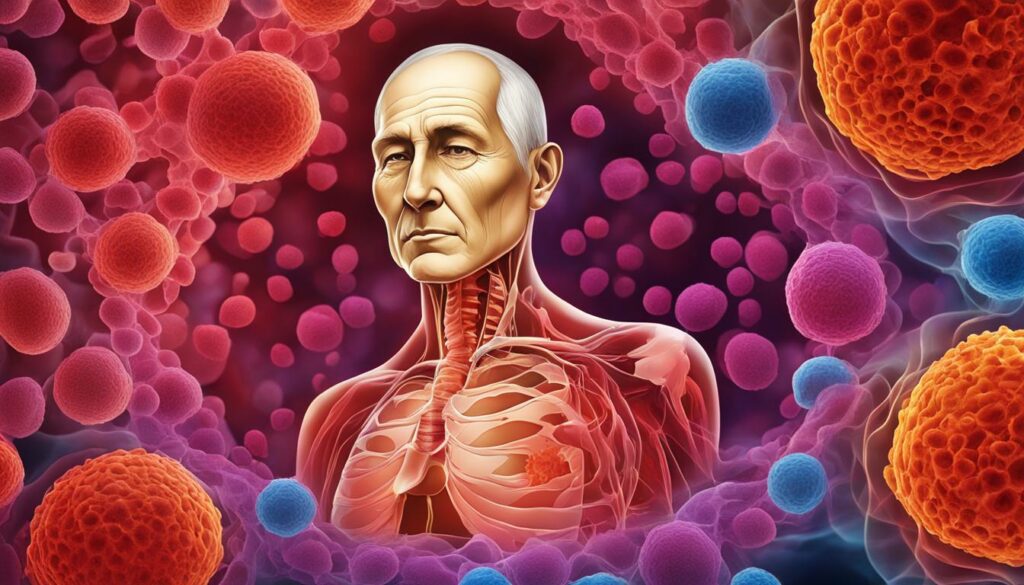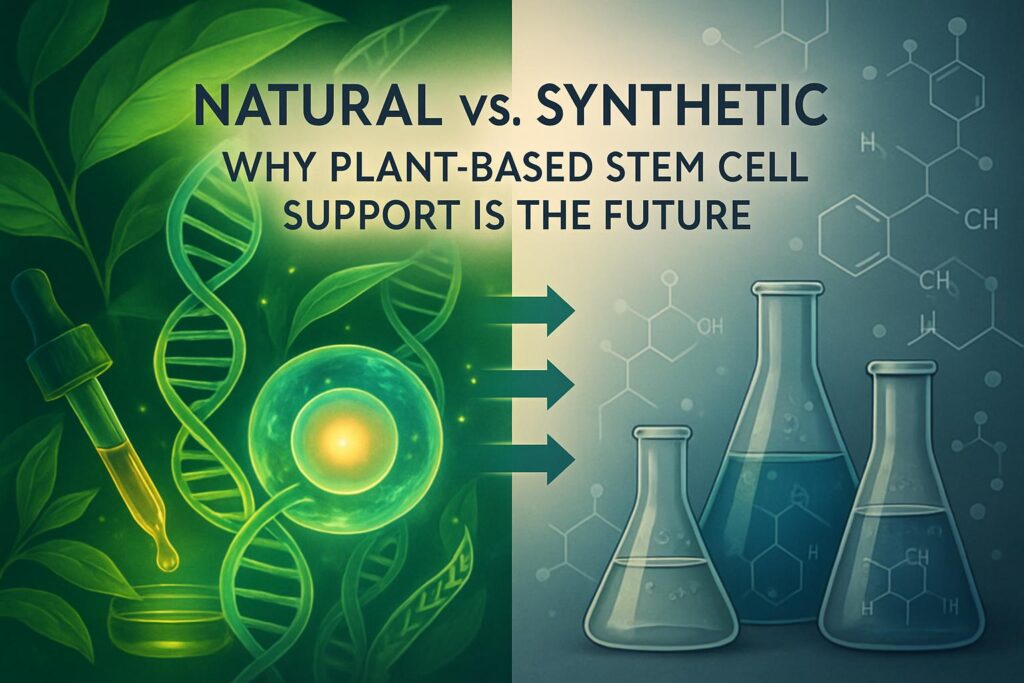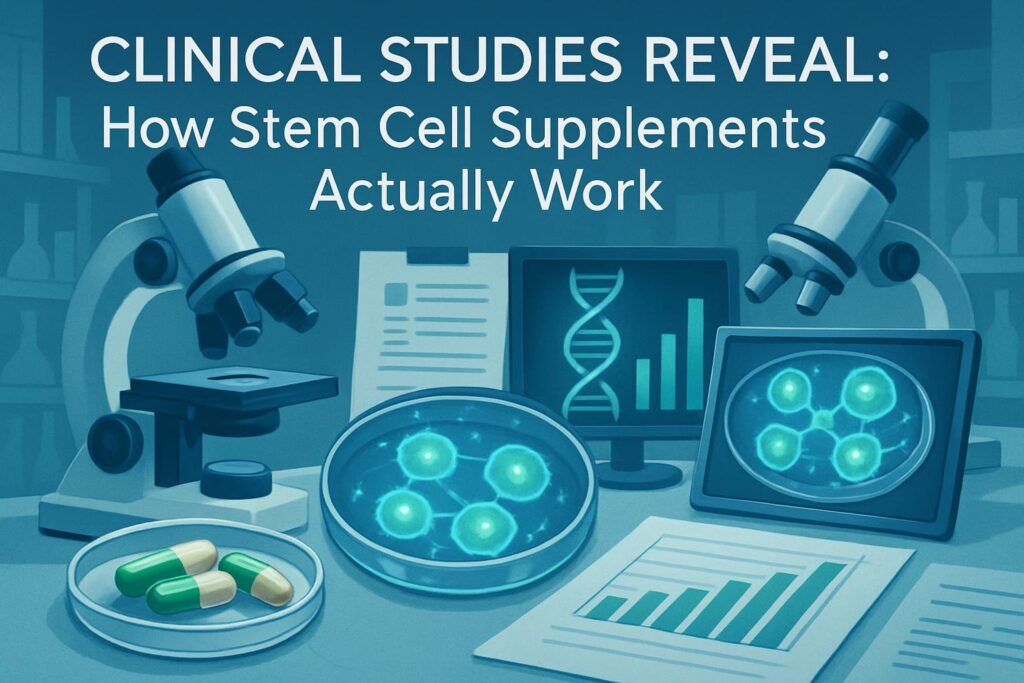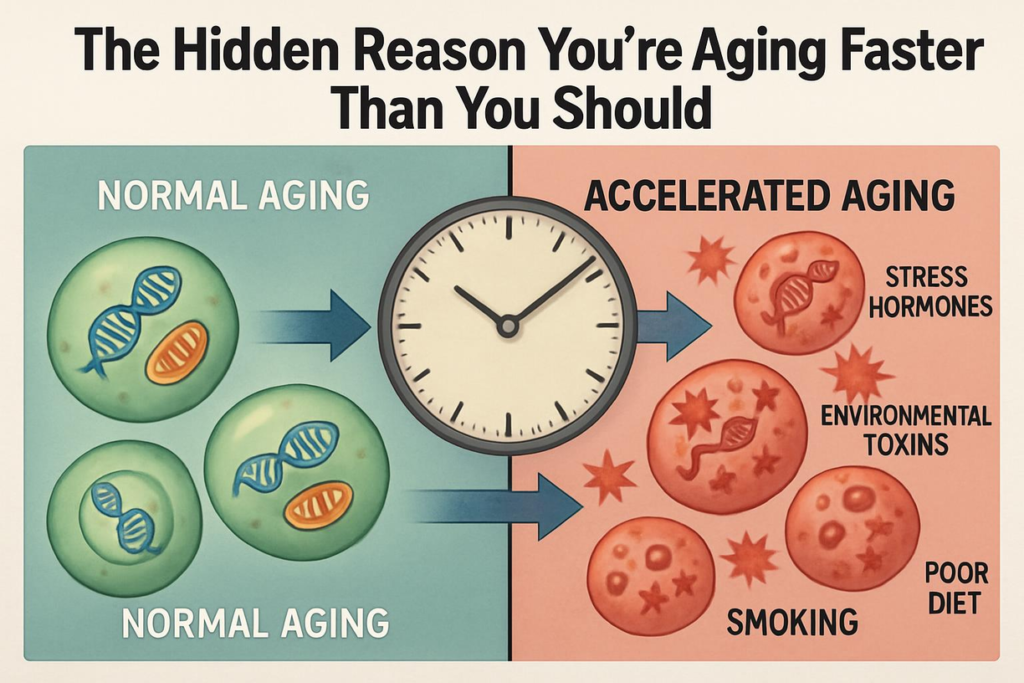Stem cell therapy holds great promise in the field of regenerative medicine, offering hope for the treatment of various diseases and conditions. However, when it comes to older patients, the effectiveness of stem cell therapy may be compromised. But why?
Have you ever wondered why stem cell therapy may not always yield successful outcomes in older patients?
Key Takeaways:
- Aging can impact the regenerative capacity and behavior of stem cells.
- The decline in stem cell function with age can limit the success of stem cell therapy in older patients.
- Understanding the factors that affect stem cell behavior in aging is crucial for developing effective treatments.
- Ongoing research aims to uncover ways to enhance stem cell therapy in older individuals.
- Advancements in stem cell biology offer hope for improving outcomes in the aging population.
Understanding Stem Cell Aging
Aging can have detrimental effects on the regenerative capacity of stem cells. As stem cells age, they may experience a decline in their ability to self-renew and differentiate into specialized cells. Additionally, the stem cell niche, the microenvironment that supports stem cell function, may undergo changes with age, further affecting the behavior of stem cells. These age-related changes can impact the success of stem cell therapies in older patients.
Decline in Regenerative Capacity
One of the key effects of stem cell aging is a decline in the regenerative capacity of these cells. Stem cells have the unique ability to divide and give rise to new cells that can replace damaged or diseased tissues. However, with age, this regenerative capacity can diminish, leading to slower tissue repair and regeneration.
Impacts on Stem Cell Behavior
Stem cell aging also affects the behavior of these cells. This includes their ability to self-renew and differentiate into different cell types. Self-renewal refers to the process by which stem cells produce more identical stem cells, whereas differentiation involves the transformation of stem cells into specialized cell types, such as neurons or muscle cells.
Changes in the Stem Cell Niche
The stem cell niche is a complex microenvironment that regulates stem cell behavior. It provides the necessary signals and support for stem cells to thrive and function properly. However, with age, the stem cell niche undergoes changes that can disrupt the delicate balance and interactions between stem cells and their surrounding environment.
Impact on Stem Cell Therapies
The age-related changes in stem cell aging, regenerative capacity, and stem cell niche can have profound implications for the success of stem cell therapies in older patients. These therapies rely on the transplantation of healthy and functional stem cells to replace damaged cells or promote tissue regeneration. However, the compromised regenerative potential of aged stem cells and the altered stem cell niche can limit the effectiveness of these treatments.
Therefore, it is crucial for researchers and medical professionals to further understand stem cell aging and develop strategies that can enhance the regenerative capacity and behavior of stem cells in older patients. By overcoming the challenges associated with stem cell aging, we can improve the outcomes of stem cell therapies and advance the field of regenerative medicine.
Factors Affecting Stem Cell Function in Aging
As stem cells age, several factors can significantly impact their function and behavior. These factors should be taken into consideration when developing stem cell therapies for older patients. Key elements that play a crucial role in the aging of stem cells include growth factors and the accumulation of reactive oxygen species (ROS).
Growth factors: Growth factors are essential molecules that regulate cell proliferation and differentiation. They play a vital role in maintaining the regenerative capacity of stem cells. However, in older individuals, the levels and responsiveness of these growth factors may be altered. This can affect the ability of stem cells to proliferate and differentiate effectively, limiting their regenerative potential. Researchers are actively studying these alterations to develop strategies that can enhance the therapeutic efficacy of stem cell treatments in aging patients.
Reactive oxygen species: Reactive oxygen species (ROS) are harmful byproducts of cellular metabolism that accumulate with age. Elevated levels of ROS can cause oxidative stress, leading to cellular damage and impaired stem cell function. The presence of ROS can disrupt the delicate balance between self-renewal and differentiation of stem cells, affecting their regenerative capacity. Understanding the impact of ROS on stem cell behavior is crucial for developing targeted interventions that can mitigate their negative effects and enhance the efficacy of stem cell therapies in aging individuals.
By considering the influence of growth factors and the accumulation of reactive oxygen species, researchers can develop strategies that address these factors and their impact on stem cell function in aging patients. The novel insights gained from these studies may lead to the development of more effective and targeted stem cell therapies for older individuals, offering new hope for regenerative medicine applications in the aging population.
Factors Affecting Stem Cell Function in Aging
| Growth Factors | Reactive Oxygen Species (ROS) |
|---|---|
| Altered levels and responsiveness in older individuals | Accumulation with age due to increased oxidative stress |
| Impact on cell proliferation and differentiation | Disruption of stem cell self-renewal and differentiation |
| Limitation on regenerative potential | Impaired stem cell function and regenerative capacity |
Impact on Stem Cell-Based Therapies
The decline in stem cell function with age can pose challenges for stem cell-based therapies in older patients. Stem cell therapies aim to replace damaged or diseased cells with healthy ones derived from stem cells, offering a potential treatment for a range of conditions. However, the age-related changes in stem cells may limit their regenerative potential, impacting the effectiveness of stem cell treatments in older patients.
In regenerative medicine strategies, stem cell-based therapies play a crucial role in tissue regeneration, offering hope for patients with various medical conditions. By harnessing the regenerative properties of stem cells, these therapies have the potential to facilitate healing, repair, and restoration of damaged tissues.
However, the effectiveness of stem cell-based therapies can be influenced by the aging process. As we age, our stem cells undergo changes that can affect their functionality and regenerative capacity. These age-related changes can impact the success of stem cell treatments in older patients, potentially limiting their benefits in terms of tissue regeneration and overall patient outcomes.
It is important to note that while the decline in stem cell function is more pronounced in older individuals, it is not entirely exclusive to them. Stem cell function can also be affected by other factors such as chronic diseases, environmental exposure, and genetic predisposition.
Challenges in Stem Cell-Based Therapies for Older Patients
The decline in stem cell function with age can manifest in various ways, making it more difficult to achieve the desired outcomes of stem cell-based therapies. Some of the challenges that arise when treating older patients with stem cell-based therapies include:
- Decreased regenerative potential: Age-related changes can reduce the regenerative capacity of stem cells, making it harder for them to differentiate into specialized cells and repair damaged tissues effectively.
- Reduced stem cell population: Aging can lead to a decline in the number of functional stem cells in the body, further limiting their ability to promote tissue regeneration.
- Altered stem cell behavior: The behavior of stem cells can be influenced by age-related changes, affecting their ability to migrate to injury sites, interact with other cells, and release essential growth factors or cytokines required for tissue regeneration.
- Impaired communication within the stem cell niche: The stem cell niche, which provides the necessary microenvironment for stem cell function, can undergo changes with age, compromising the communication and interaction between stem cells and their surrounding support cells.
These challenges highlight the need for the development of alternative regenerative medicine strategies to overcome the limitations posed by age-related changes in stem cell function. By understanding the mechanisms behind stem cell aging and exploring novel approaches, researchers strive to enhance the efficacy of stem cell therapies and improve treatment outcomes in older patients.
Applications in Regenerative Medicine
Regenerative medicine encompasses a range of approaches aimed at restoring or replacing damaged tissues and organs. Stem cell-based therapies are a key component of regenerative medicine strategies, offering potential treatments for a wide array of medical conditions.
The applications of stem cell-based therapies in regenerative medicine include but are not limited to:
- Treatment of degenerative diseases: Stem cells have the ability to differentiate into a variety of cell types, making them a valuable tool in the treatment of degenerative diseases such as Parkinson’s disease, Alzheimer’s disease, and age-related macular degeneration.
- Repairing damaged tissues: Stem cell therapies can aid in the repair of damaged tissues, such as those affected by heart attacks, stroke, spinal cord injuries, and joint injuries.
- Enhancing wound healing: Stem cells can promote the healing of chronic wounds, such as diabetic ulcers, by stimulating tissue regeneration and angiogenesis.
- Supporting organ transplantation: Stem cells can be used to enhance the success of organ transplantation by promoting graft survival, reducing the risk of rejection, and improving organ function.
Stem cell-based therapies hold immense potential in revolutionizing the field of regenerative medicine. Continued research and advancements in stem cell biology are key to unlocking the full potential of these therapies and improving the treatment options available for patients, particularly older individuals who may face additional challenges related to stem cell function and tissue regeneration.
Understanding Stem Cell Behavior in Aging
Aging can have a profound effect on the behavior of stem cells, leading to changes in their ability to differentiate into specific cell types. As stem cells age, their capacity for differentiation becomes less efficient, which can impact tissue regeneration. Let’s explore how the process of aging influences stem cell behavior and its implications for stem cell therapy in older patients.
Stem Cell Differentiation and Tissue Regeneration
Stem cell differentiation is a crucial process that allows stem cells to develop into specialized cell types and contribute to tissue repair and regeneration. However, the effect of aging on stem cells can disrupt this delicate balance.
With aging, the efficiency of stem cell differentiation decreases, resulting in a decline in the regenerative potential of tissues. This decline in differentiation ability limits the production of specialized cells needed for effective tissue repair. As a result, the body’s ability to heal and regenerate becomes compromised, leading to age-related conditions and impaired overall tissue function.
Cell Fate Regulation and Disease Development
Besides influencing stem cell differentiation, the aging process can also affect the regulation of cell fate, which refers to the ultimate destiny of a cell. Aging-associated changes in stem cells can lead to altered cell fate decisions, increasing the likelihood of cellular dysfunction and disease development.
These dysregulated cell fate decisions can result in the formation of abnormal cell types or the disruption of normal cellular processes. Over time, this can contribute to the development of age-related diseases such as neurodegenerative disorders, cardiovascular diseases, and various other conditions.
The Challenges of Stem Cell Therapy in Older Patients
The changes in stem cell behavior that occur with aging present significant challenges for stem cell therapy in older patients. Stem cell therapy aims to harness the regenerative potential of stem cells to treat various diseases and injuries. However, the altered behavior of aged stem cells can limit their effectiveness in this therapeutic approach.
In order to address these challenges, researchers are actively studying the mechanisms behind stem cell aging to develop strategies that enhance stem cell function and promote successful differentiation. By understanding and targeting the factors that influence stem cell behavior, it may be possible to improve the outcomes of stem cell therapy in older patients.

The Role of Stem Cell Research in Aging
Stem cell research plays a crucial role in expanding our knowledge and understanding of how the aging process impacts the function and behavior of stem cells. Ongoing advancements in this field help uncover the molecular mechanisms underlying stem cell aging and aim to develop strategies that can combat these effects. One key area of focus is exploring how young stem cells can be utilized to rejuvenate aged tissues, ultimately enhancing the efficacy of stem cell therapies for older patients.
The Advancements in Stem Cell Research
The continuous progress in stem cell research allows scientists to gain valuable insights into the aging process and its impact on stem cell function. Through extensive studies and experiments, researchers have deepened their understanding of the changes that occur in aging stem cells and the mechanisms behind these alterations.
These advancements have provided crucial information about the cellular and molecular changes in aged stem cells, helping scientists devise innovative strategies to address these aging-related challenges. By harnessing the power of stem cell research, scientists are unlocking a wealth of knowledge that paves the way for new breakthroughs in regenerative medicine.
Understanding Stem Cell Behavior in Aging
Achieving a comprehensive understanding of how aging affects stem cell behavior is critical for developing effective therapies for older patients. Stem cells, which have the remarkable ability to differentiate into specialized cell types, play a crucial role in tissue regeneration and repair.
However, as individuals age, the behavior of stem cells undergoes significant changes. Stem cell differentiation becomes less efficient, leading to a decline in tissue regeneration and repair capabilities. This understanding highlights the need to explore innovative approaches that can harness the potential of young stem cells to counteract the effects of aging and rejuvenate aged tissues.
The Use of Young Stem Cells
Utilizing young stem cells presents a promising avenue for enhancing the effectiveness of stem cell therapies in older patients. Young stem cells possess greater regenerative potential and are more responsive to tissue repair signals, making them ideal candidates for rejuvenating aged tissues.
Studies have shown that introducing young stem cells into aging tissues can stimulate regeneration and contribute to tissue repair. By leveraging the knowledge gained from stem cell research, scientists are investigating methods to optimize the use of young stem cells in clinical applications, aiming to develop targeted therapies that can restore tissue function and improve the quality of life for older patients.
The Journey Towards Advancements in Stem Cell Therapies
The journey towards harnessing the full potential of stem cells in regenerative medicine relies heavily on ongoing research and the continuous expansion of our knowledge base. Stem cell research helps identify the intricate mechanisms underlying stem cell aging, discover innovative techniques for using young stem cells, and develop effective therapies for older patients.
As the field of stem cell research advances, it brings us closer to unlocking new possibilities in regenerative medicine and improving the lives of older individuals. With each new discovery, scientists move closer to overcoming the challenges posed by stem cell aging and realizing the full potential of stem cell therapies in the aging population.
| Advancements in Stem Cell Research | Use of Young Stem Cells | Improved Regenerative Medicine |
|---|---|---|
| Deeper understanding of aging stem cells | Enhanced regenerative potential | Rejuvenation of aged tissues |
| Identifying mechanisms behind stem cell aging | Optimized tissue repair capabilities | Improved quality of life |
| Development of innovative strategies | Stimulation of tissue regeneration | Targeted therapies for older patients |
Potential Solutions for Enhancing Stem Cell Therapy in Older Patients
In order to enhance the effectiveness of stem cell therapy in older patients, researchers are exploring various strategies. These strategies focus on addressing the challenges posed by aging on stem cells, including the decline in stem cell self-renewal, proliferation, and efficient differentiation. By understanding the underlying mechanisms that contribute to stem cell aging, scientists hope to develop interventions that can rejuvenate aged stem cells and improve their regenerative potential.
Promotion of Stem Cell Self-Renewal
Table: Promotion of Stem Cell Self-Renewal
| Potential Strategies | Description |
|---|---|
| Activation of telomerase | Increases the lifespan of stem cells |
| Inhibition of senescence pathways | Delays cellular aging and promotes self-renewal |
| Modulation of epigenetic regulators | Regulates gene expression and maintains stem cell properties |
Promotion of Stem Cell Proliferation
Table: Enhancement of Stem Cell Proliferation
| Potential Strategies | Description |
|---|---|
| Enhancement of growth factor signaling | Stimulates stem cell division and proliferation |
| Modulation of cell cycle regulators | Promotes cell cycle progression and stem cell proliferation |
| Augmentation of metabolic pathways | Provides energy for increased stem cell proliferation |
Modulation of Stem Cell Differentiation
Table: Modulation of Stem Cell Differentiation
| Potential Strategies | Description |
|---|---|
| Manipulation of signaling pathways | Directs stem cells toward desired cell lineages |
| Modification of stem cell niche components | Optimizes the microenvironment for specific cell differentiation |
| Use of exogenous factors | Supplements stem cells with factors that enhance differentiation |
By utilizing these potential solutions, researchers aim to overcome the limitations posed by aging on stem cells and improve the outcomes of stem cell therapy in older patients. Continued advancements in stem cell research and regenerative medicine hold promise for developing effective treatments that harness the regenerative potential of stem cells, regardless of age.
Current Limitations and Future Directions
While stem cell therapy is showing promise as a treatment for various diseases, there are still limitations that need to be addressed, especially when it comes to elderly patients. The decline in stem cell function with age poses challenges for the success of stem cell treatments in this population.
Ongoing research and advancements in the field of stem cell biology, however, offer hope for overcoming these limitations and improving the outcomes of stem cell therapy in older patients. Scientists are exploring various strategies to enhance the effectiveness of stem cell therapy in elderly individuals.
Limitations in Stem Cell Therapy for Elderly Patients
Elderly patients often present unique challenges when it comes to stem cell therapy. Age-related changes in stem cells, such as reduced regenerative capacity and altered behavior, can impact the effectiveness of treatment.
The table below highlights some of the key limitations faced in stem cell therapy for elderly patients:
| Limitations | Impact |
|---|---|
| Decline in stem cell function | Reduced regenerative potential |
| Changes in stem cell behavior | Altered differentiation and tissue regeneration |
| Age-related changes in the stem cell niche | Disruption of cellular interactions and signaling |
Addressing these limitations is crucial for improving the outcomes of stem cell therapy in elderly patients.
Future Directions in Stem Cell Research
Stem cell research is continuously advancing our understanding of stem cell aging and how to overcome its limitations in elderly patients. Here are some promising future directions in stem cell research:
- Exploring stem cell rejuvenation techniques to enhance the regenerative potential of aged stem cells
- Developing novel methodologies to improve stem cell self-renewal and proliferation
- Investigating the role of epigenetic modifications in stem cell aging and developing interventions to reverse them
- Advancing our knowledge of the stem cell niche and developing strategies to optimize its function in elderly patients
Continued research in stem cell biology holds great promise for unlocking the full potential of stem cell therapy in elderly patients. By addressing the current limitations and exploring future directions, we can improve the efficacy and outcomes of stem cell treatments for the aging population.
Conclusion
Stem cell therapy in older patients presents unique challenges in the field of regenerative medicine. The aging of stem cells and changes in the stem cell niche can impact the regenerative capacity and behavior of these cells, potentially limiting the success of stem cell-based treatments in elderly individuals. However, the future prospects of stem cell therapy in older patients are promising.
Ongoing research and advancements in stem cell biology are shedding light on the aging process of stem cells and offering hope for improving the outcomes of stem cell therapy. By gaining a better understanding of stem cell aging and the factors that influence their function, researchers can develop strategies to enhance the effectiveness of stem cell treatments in the aging population.
Further studies are needed to unlock the full potential of stem cell therapy in older patients. By uncovering the underlying mechanisms behind stem cell aging and discovering ways to rejuvenate aged stem cells, we can overcome the challenges and limitations currently faced in this field. With continuous progress in stem cell research, we can look forward to a future where stem cell therapy becomes a powerful tool for improving the health and quality of life in older patients.
FAQ
What factors can affect the success of stem cell therapy in older patients?
Factors such as the aging of stem cells themselves and changes in the stem cell niche can impact the efficacy of stem cell therapies in older patients.
How does aging affect the regenerative capacity of stem cells?
Aging can lead to a decline in the ability of stem cells to self-renew and differentiate into specialized cell types, limiting their regenerative potential.
What are some factors that can influence the function of stem cells during the aging process?
Factors such as growth factors, which play a role in cell proliferation and differentiation, as well as the accumulation of reactive oxygen species, can impact stem cell function during aging.
How does aging affect stem cell behavior?
Aging can alter the ability of stem cells to differentiate into specific cell types, potentially limiting tissue regeneration and increasing the likelihood of cellular dysfunction and disease development.
What role does stem cell research play in understanding the effects of aging on stem cells?
Stem cell research is essential for advancing our knowledge of how aging affects stem cell function and behavior, with the goal of developing interventions to rejuvenate aged stem cells.
Are there potential solutions for enhancing stem cell therapy in older patients?
Researchers are exploring various strategies to enhance stem cell therapy in older patients, including promoting stem cell self-renewal, proliferation, and differentiation.
What are the limitations of stem cell therapy in older patients?
The decline in stem cell function with age can pose challenges for the success of stem cell treatments in older patients, limiting their regenerative potential.
What are the current limitations and future directions of stem cell therapy for older patients?
While there are limitations in stem cell therapy for older patients, ongoing research and advancements in stem cell biology offer hope for improving treatment outcomes in the aging population.
Is stem cell therapy a viable option for older patients in regenerative medicine?
While stem cell therapy holds promise for the treatment of various diseases, the challenges posed by aging on stem cell function may limit its effectiveness in older patients. However, future prospects look promising with continued research and development in the field.



